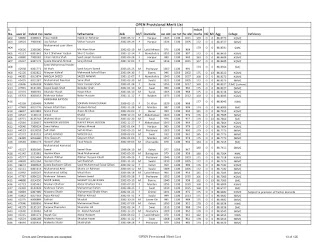Chap No. 14 D and F BLOCK ELEMENTS
1. Electronic
configuration for D-shell; (n-1)d1-10 ns0,1,2,3
2. Binding
energy increase upto VIB and then decreases.
3. Oxidation
states; +3 is common at beginning and +2 at the end.
Catalytic
properties;
4. Fe
→ Haber process → Ammonia synthesis
5. V2O5
→ Contact process → H2SO4 synthesis
6. TiCl4
→ polymerization of ethene to polythene
7. Ni,
Pt and Pd → hydrogenation of unsaturated hydrocarbons.
8. Cu
→ oxidation of ethanol to acetaldehyde.
Magnetic
behavior;
9. Weakly
attracted → paramagnetic
10. Weakly
repelled → diamagnetic
11. Paramagnetic
→ one or more unpaired electron
12. Diamagnetic
→ pared electrons
13. Ferromagnetic
→ five unpaired electrons like Fe+3 and Mn+2
Alloy
Formation;
14. Gold
→ Cu = 20-25 %, Au=70-75 %
→ 18 carat
15. Brass
→ Cu = 60-80 %, Zn=20-40 %
16. Bronze
→ Cu =75-90 %, Sn=10-25 %
17. Steel
→ Fe=90-95 %, C=0.1-2 %
Complex
Ion
18. A
pale blue precipitate of Cu (II) hydroxide forms when ammonia is added to a
solution of Cu (II) ions.
19. If
we add more ammonia to four ammonia molecules and two water molecules surrounds
Cu+2 ion and deep blue solution of formula [Cu(H2O2(NH3)4]+2
is formed.
Nomenclature
of coordination complex
20. Catoin
is named first and anion later.
21. Negative
ligands ends with ‘o’.
22. Positive
ligands end with ‘ium’.
23. Ligand
of complex are named in order of negative → neutral → positive.
24. Name
of metal is followed by ‘ate’.
25. [Cr(NH3)
6](NO3) 3 →Hexaamminechromium (lll) nitrate
26. K2
[PtCl6] → Potassium
hexachoroplatinate (lV)
27. [CO(NH3)
3(NH2)3] →
Trinitrotriaminecobalt (lll)
28. [CO(NH3)4(Cl2)]Cl → Dichlorotetraaminecobalt (lll) chloride
29. Na3[Co(NO2)6] → sodium hexachlorocobaltater (lll)
30. Na3[Fe(CN)6] → sodium hexacyanoferrate (lll)
31. K3
[Fe(CN)6] → potassium
hexacyanoferrate (lll)
32. Na2
[Fe(N)(CN)5] → Sodium
pentacyanonitrosylferrate (lll)
33. [CO(en)2
(Cl)2] →Dichloro-Bi-ethylenediamine cobalt (ll)
Shapes
of complex ions
34. 6-Coordinated
complex ions has octahedral shape.
35. 4-coordinated
complex ions have tetrahedral and square planar complex.
36. 5-coordinated
complex ions have triognal bipyramidral and square pyramidal shapes.
37. [CuCl4]2-
and [CoCl] 2- have tetrahedral ion geometry
38. Cisplatin
{Pt(NH3)2Cl2} has square planar structure
Colours
of Complexes
39. Sc3+
→ Colourless
40. Ti3+→
Purple
41. Ti4+→
Colourless
42. Cr3+→
Blue
43. Mn2+→
Green
44. Fe3+→
Yellow
45. Co2+→
Blue
46. Ni2+→
Green
47. Cu2+→
Blue
48. Zn2+→
Colourless
→ 33-43-23-22-22 →p-bgy-bgb







